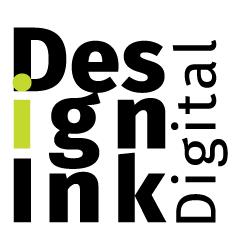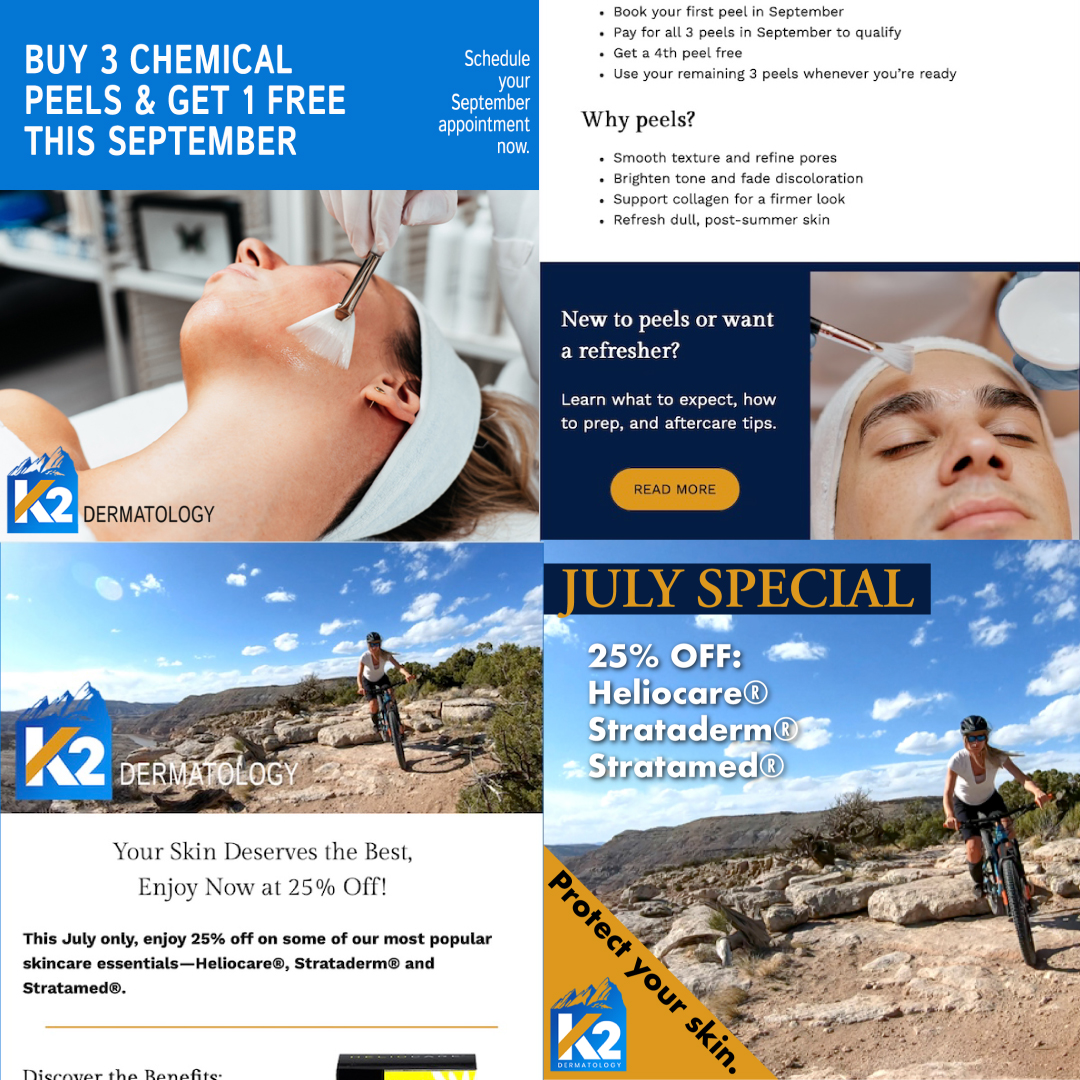As a small business owner, you wear many hats. You’re the CEO, the head of sales, the customer service lead, and often, the chief marketing officer. With so many amazing DIY design tools available, it’s tempting to add “graphic designer” to your already impressive resume. And for some tasks, that’s a fantastic, budget-friendly solution! But how do you know when your DIY efforts are holding your marketing back? Leaping to hire a professional designer can feel like a big step, but it’s one of the most powerful investments you can make in your business’s growth. It’s about more than just pretty pictures; it’s about creating strategic assets that drive real results.
Together, let’s explore the key moments when partnering with a pro designer can transform your marketing from good to truly great. We’ll look at when DIY makes sense, the clear signs it’s time to call in an expert, and how that collaboration will set you up for incredible success!
Do You Love a Website With Multiple Fonts and a Variety of Colors?
It’s easy to get excited by all the creative options available in design tools. A dozen fonts look cool, and why pick just one or two colors when you can have a rainbow? This is a common pitfall for DIY designers. While it seems like more is more, the opposite is usually true in design. Using too many fonts and colors can create visual chaos. It makes your materials difficult to read and can confuse your audience, weakening your brand message.
A professional designer knows how to practice restraint. We understand the psychology of color and the art of typography. We’ll work with you to select a limited, impactful color palette and two or three versatile fonts that reflect your brand’s personality. This creates a clean, cohesive, and memorable identity. Together, we can build a visual system that is both beautiful and functional, ensuring your brand looks polished and professional across every platform. It’s about making deliberate choices that strengthen your brand, not overwhelm it.
When DIY Design is Your Best Friend
Let’s celebrate the power of DIY! Tools like Canva have revolutionized design, making it accessible to everyone. There are times when tackling a design project yourself is the smart, efficient, and right choice for your business. We get it, and we’re all for it!
Here are a few scenarios where your DIY skills can really shine:
- Daily Social Media Posts: Creating quick, engaging graphics for your daily Instagram, Facebook, or LinkedIn posts is a perfect DIY task. You know your audience best, and using pre-made templates allows you to stay active and consistent without a huge investment. You can share behind-the-scenes content, quick tips, or company updates with speed and authenticity.
- Simple Internal Documents: Need a polished-looking flyer for an internal team event or a simple presentation for a weekly meeting? These are great opportunities to use your DIY design skills. The audience is internal, and the goal is clear communication, not winning new customers.
- Testing and Experimenting: Maybe you have a new idea for a social media campaign or a simple ad concept. DIY design is perfect for the early stages of testing. You can create several versions of a graphic quickly and affordably to see what resonates with your audience before investing in a larger, professional campaign. It’s a low-risk way to gather valuable data.
In these situations, speed and cost-effectiveness are your top priorities. DIY tools empower you to get things done quickly and keep your marketing momentum going, which is a huge win for any growing business!
3 Signs It’s Time to Partner with a Professional
While DIY is great for day-to-day tasks, there comes a point where your brand needs a more strategic and polished touch to reach the next level. Investing in professional design isn’t just a cost; it’s a strategic move to boost your credibility, connect with more customers, and ultimately, grow your revenue.
Here are three clear signs that it’s time to team up with a design pro.
1. You’re Launching a Major Brand Asset
Some marketing materials are foundational. They are the cornerstones of your brand identity and the first impression you make on potential customers. When the stakes are this high, a professional touch is non-negotiable.
Think about these critical assets:
- Your Logo and Brand Identity: Your logo is the face of your company. It needs to be unique, memorable, and versatile enough to look great on a website, a business card, or a billboard. A professional designer doesn’t just draw a picture; they build a whole visual system, including color palettes, fonts, and usage guidelines. This ensures your brand looks consistent and professional everywhere, building trust and recognition.
- Your Website: Your website is your digital storefront, and it works for you 24/7. A DIY site might look okay, but a professionally designed website is built with a deep understanding of user experience (UX) and user interface (UI) design. It’s structured to guide visitors on a specific journey, encouraging them to sign up, make a purchase, or contact you. A well-designed site isn’t just about aesthetics; it’s a powerful tool to increase conversion rate with a pro web designer.
- A Major Advertising Campaign: Are you planning a significant ad spend on Google, social media, or print? The design of your ads can make or break your return on investment. A professional designer understands how to create visuals that stop the scroll, communicate a message in seconds, and comply with the specific requirements of each platform. They craft designs that capture attention and drive action, ensuring your budget is well spent.
- Logo Usage: How and where your logo can be used.
- Color Palette: Your exact brand colors to be used across all materials.
- Typography: The specific fonts for headings and body text.
- Imagery Style: The type of photos or illustrations that represent your brand.
2. Your Brand Lacks Consistency
Take a look at your marketing materials. Does your website look like it belongs to the same company as your Instagram feed? Do your business cards match the brochure you hand out? If the answer is no, you have a consistency problem.
Inconsistency confuses customers and weakens your brand. It can make your business appear disorganized or unprofessional. A potential customer might see a slick, modern ad on Facebook, click through to a dated-looking website, and lose confidence in your brand instantly.
A professional designer solves this by creating and implementing a cohesive brand style guide. This guide is the rulebook for your brand’s visual identity. It dictates:
By enforcing this consistency, a designer ensures that every touchpoint a customer has with your business reinforces the same strong, trustworthy brand identity. That’s how you build lasting recognition and loyalty.
You Aren’t Seeing the Results You Want
Perhaps the most crucial sign is when your marketing efforts simply aren’t paying off. You’re posting on social media, sending out emails, and running ads, but you’re not getting the clicks, leads, or sales you need.
Often, the problem isn’t your message—it’s the delivery. Effective design is about communication, not just decoration. If your visuals are cluttered, confusing, or fail to grab attention, your message will be lost.
A professional website designers get results when they bring a strategic eye to your marketing. They know how to:
- Create Visual Hierarchy: They arrange elements to guide the viewer’s eye to the most important information, like a call-to-action button.
>
- Use Psychology of Color: They choose colors that evoke the right emotions and prompt specific actions.
- Optimize for Readability: They select fonts and layouts that make your content easy to read and digest.
When you hire a designer, you’re not just getting their artistic skills; you’re getting a partner who understands how to use design to achieve your business goals. They can analyze what’s not working and create new visuals specifically engineered to convert viewers into customers.
Deciding What’s Right For You
Choosing between DIY and professional design isn’t about one being better than the other; it’s about choosing the right tool for the right job. DIY is your go-to for quick, daily tasks that keep your brand active and engaged. But when it’s time to build foundational assets, create a cohesive brand, and drive measurable results, partnering with a professional designer is one of the smartest investments you can make.
Think of a designer not as an expense, but as a collaborative partner dedicated to your success. Together, we can build a powerful, memorable brand that not only looks amazing but also achieves your most ambitious business goals. When you’re ready to make that leap, we’re here to help you shine!
Frequently Asked Questions (FAQ)
Isn’t hiring a professional designer really expensive?
It’s an investment that pays for itself! While there is an upfront cost, professional design leads to better brand recognition, higher conversion rates, and a stronger competitive edge. Many agencies, like ours, offer scalable solutions to fit different budgets, ensuring you get a fantastic return on your investment.
How do I know if a designer understands my vision?
A great designer-client relationship is built on collaboration! A professional will start with a thorough discovery process to understand your business, audience, and goals. They’ll listen to your ideas and combine them with their expertise to bring your vision to life strategically and effectively. Always look for a designer who prioritizes communication and partnership.
The DesignInk Digital team is a passionate group of creators, strategists, and marketing experts. We work hand-in-hand with small and medium-sized businesses to build vibrant brands and drive growth. Ready to get started? Let’s chat and create something amazing together.

